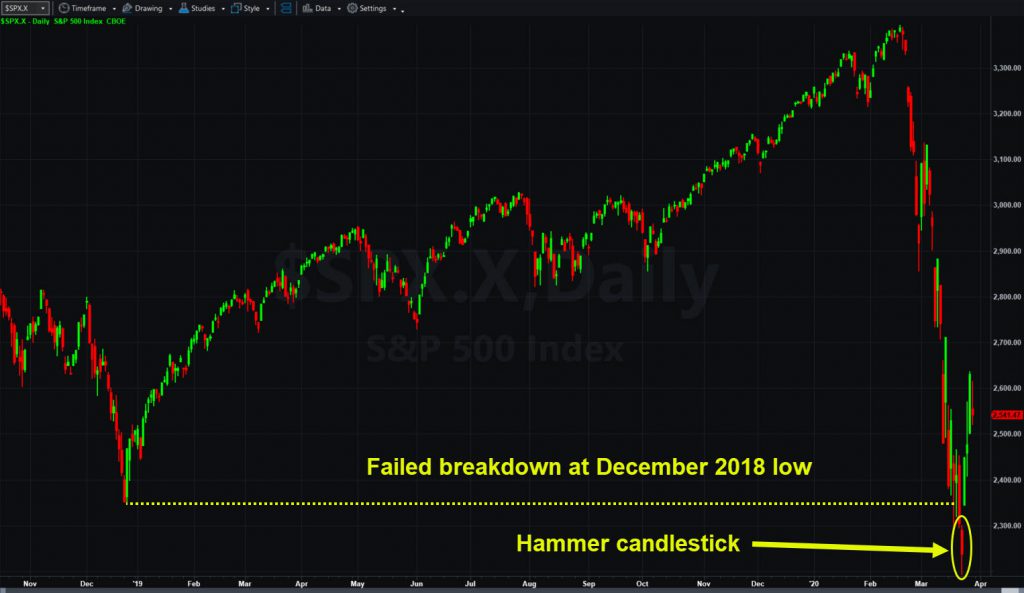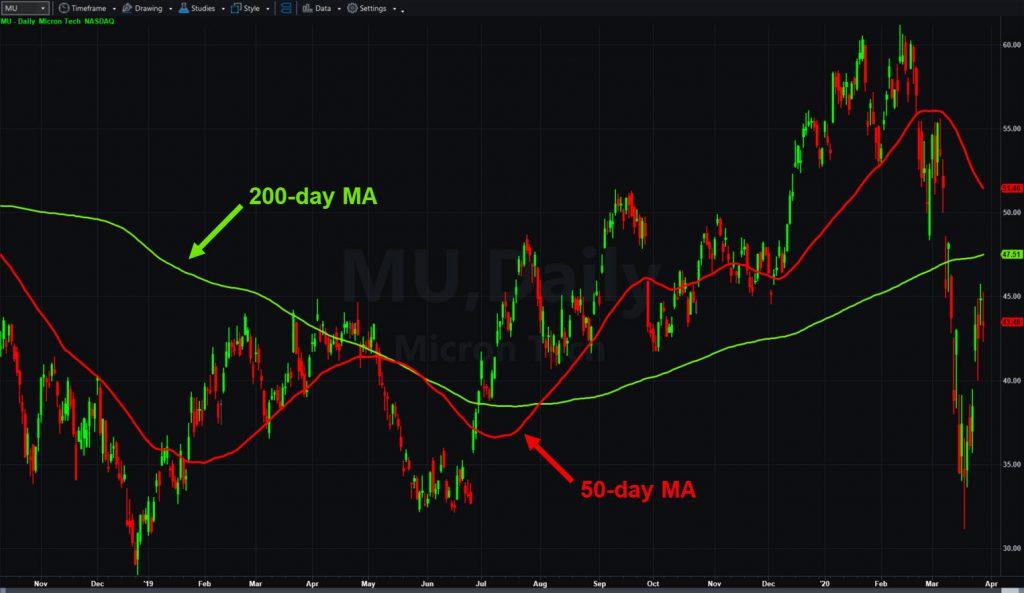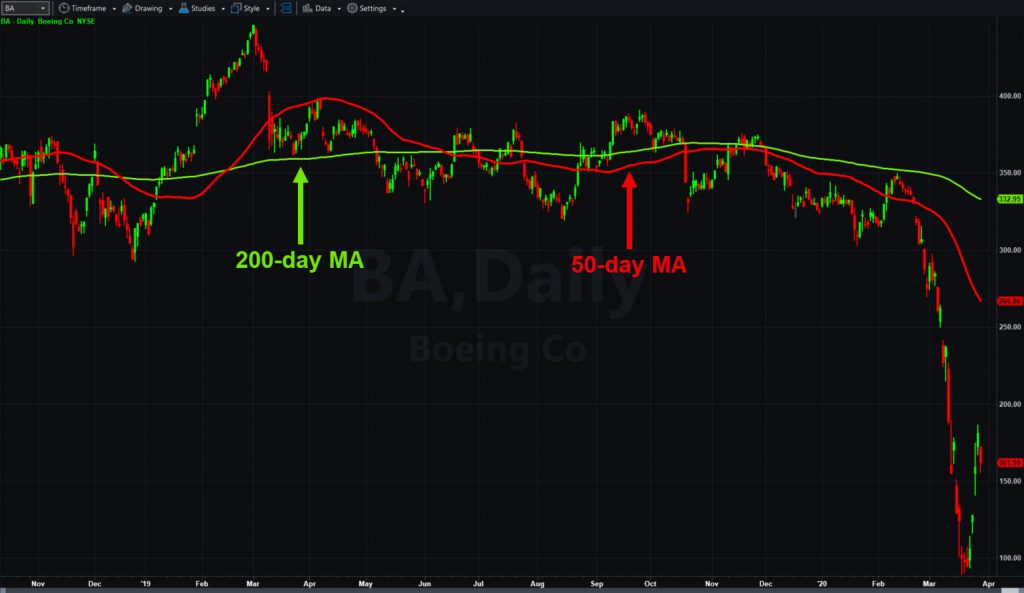Coronavirus kept spreading last week, but investors are trying to look past the outbreak.
The S&P 500 surged 10 percent between Friday, March 20, and Friday, March 27. It was the biggest weekly rally in 11 years and followed a major drop the previous week. Every segment of the market advanced.
A combination of seller exhaustion and government support fueled the bounce. First, the S&P 500 tried to close below a key level from 2018. It then roared back, resulting in a false breakdown and a “hammer” candlestick pattern. Both could indicate the bears are running out of energy after one of the most violent corrections in history.
There were also key actions from the public sector:
- The Federal Reserve made an open-ended pledge to buy assets like corporate bonds. This new step, which never happened during the financial crisis, reduces the risk of credit markets freezing up.
- President Trump expressed hope that shelter-in-place orders will end by Easter Sunday (April 12). He extended that deadline through April 30 yesterday.
- The U.S. Congress passed a $2 trillion relief bill to keep the economy alive during the virtual lockdown.
The importance of the aid was starkly evident on Thursday, when the Labor Department reported that jobless claims shot to a record 3.3 million. Consumer sentiment also plunged to a 3-1/2 year low, and new-home sales cratered.

Optimism on the Rise
While those events are bearish, the stock market priced in considerable bad news by crashing 31 percent from its peak. Now some big professionals are seeing opportunities to buy the pullback.
Those included Leon Cooperman, Paul Tudor Jones, Bill Ackman and John Rogers of Ariel Capital. Analysts also issued a slew of upgrades to capitalize on lower prices. Needham raised Nvidia (NVDA) to buy. UBS boosted Tesla (TSLA) to neutral. Goldman Sachs hiked Intel (INTC) to neutral. Deutsche Bank lifted Qualcomm to buy.
Additionally there were signs that major companies are weathering the coronavirus storm. Nike’s (NKE) Chinese sales only declined 4 percent in February, much less than feared. The shoemaker’s quarterly numbers also beat estimates and executives remained upbeat on new product launches.

Working From Home
Memory-chip maker Micron Technology (MU) had similarly impressive results. It fell hard last month as Asian factories shut down. But now it’s seeing the potential for more demand over the long run as coronavirus pushes millions of workers to at-home offices.
This could become an important narrative for technology in coming months. On one hand, the economic contraction resulting from coronavirus will hurt tech spending. But over the longer run, it may boost the broader trends toward cloud computing and 5G networking.
Boeing (BA) was the single best performer in the S&P 500 last week, flying more than 70 percent. The rebound followed a decline of more than 70 percent in the preceding month. Lincoln National (LNC) and Discover Financial (DFS) followed with gains of 61 percent and 52 percent, respectively.

Nordstrom (JWN) was the biggest decliner, sliding 10 percent. The department store was struggling before the lockdown, and its business has only gotten worse since.
How Many Jobs Were Lost in March?
This week brings economic data that’s usually important. While forecasters expect sharp hits because of coronavirus, investors may look past the negativity.
Pending home sales are due today. Consumer confidence follows tomorrow morning.
The first big numbers are due Wednesday: ADP’s private-sector payrolls report and the Institute for Supply Management’s manufacturing index. Economists see the private-sector payrolls down by about 150,000. They expect manufacturing to drop well below the 50 level that separates expansion from contraction.
Oil inventories are the other big item on Wednesday.
Initial jobless claims on Thursday could remain above 3 million. Walgreen Boots Alliance (WBA) also reports earnings in the premarket.
The week concludes with non-farm payrolls for March on Friday morning. Economists think that number will shrink by more than 120,000.
In conclusion, the coronavirus outbreak has had a rapid negative impact on the U.S. economy and stock prices. But confidence tried to return last week, thanks in a large part to actions by the government.


























